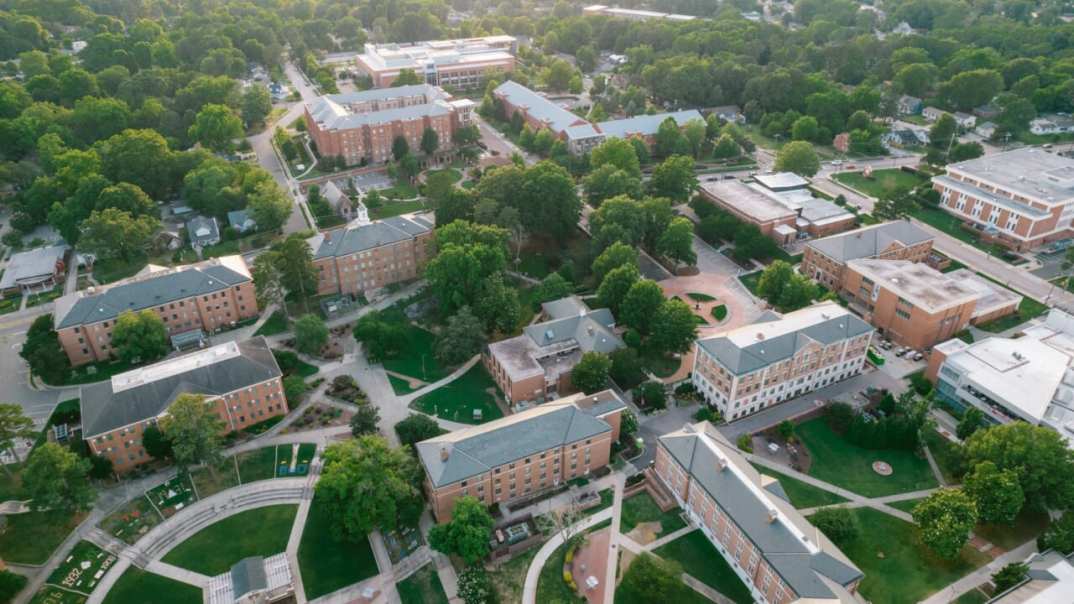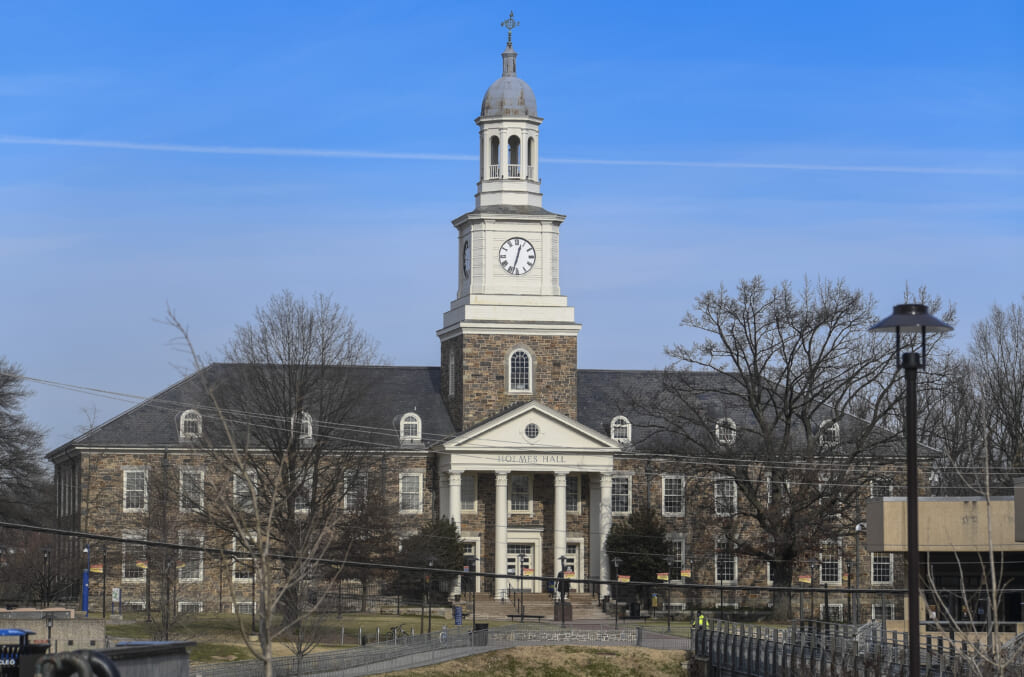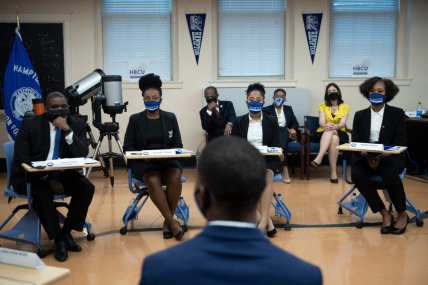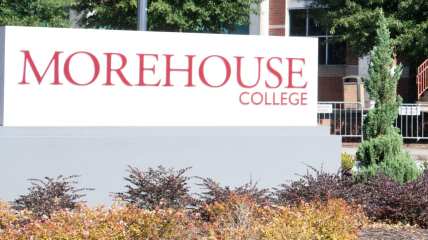It’s time to uplift Black cities by investing in HBCUs
OPINION: Approximately half of the more than 100 two- and four-year HBCUs reside in Black-majority cities. And many of these places have not received critical investments because of historic discrimination.

Evoking the contributions of graduates from Historically Black Colleges and Universities is customary during Black History Month. From political leaders like our nation’s first female vice president, Kamala Harris (Howard University), to luminaries like W.E.B. Dubois (Fisk) and artisans such as Spike Lee (Morehouse College) to social justice activists like Jesse Jackson (North Carolina A&T) and journalist like Oprah Winfrey (Tennessee State University), many of the country’s most significant contributions have come from graduates of HBCUs. Quantifying alums partially diminishes their impact, but putting their continued financial impact in perspective, HBCU graduates “generate $14.8 billion in economic impact annually; that’s equivalent to a ranking in the top 200 on the Fortune 500 list of America’s largest corporations, according to a 2017 UNCF report.
But let’s not forget, HBCUs, like all public and private postsecondary institutions, comprising two- and four-year colleges and universities, are “place-based assets,” the organizations, customs, buildings, and land that improve the lives of everyone who is proximate to them. The benefits of an HBCU extend well beyond academic training. These institutions are often the largest employer and a primary source of art, culture and sports in a region.
By any other name, colleges are the economic development organizations that invest in their students’ lives and the residents of the host cities and towns. But systemic barriers to capital to Black people and institutions only heighten the importance of HBCUs. Consequently, not only are HBCUs worthy of public and private investment, but they are also best situated to make investments in their host cities—because they value Black lives. If not for systemic barriers to capital, more HBCUs would develop mission-driven investment strategies that help uplift entire communities. If resourced, HBCUs are well-positioned to use investment capital toward housing for students and communities. HBCU should look to capitalize on their students’ innovations, helping to get them in local and national markets.
If HBCUs are to realize their full potential as a driver of economic and community development, their value and impact must be recognized by the capital markets. Otherwise, these institutions and their towns will continue to be threatened by economic and social forces.
The same UNCF report found that for “every dollar spent by an HBCU and its students produces positive economic benefits, generating $1.44 in initial and subsequent spending for its local and regional economies,” generating “134,090 jobs for their local and regional economies” with every $1million spent by HBCUs and their students producing 13 new jobs. HBCUs need the range of capital offering to heighten the impact they are already having.
Approximately half of the more than 100 two- and four-year HBCUs reside in Black-majority cities. And many of these places have not received critical investments because of historical discrimination.
To build their financial strength, we must remove the drags of racism that extract wealth from HBCUs. While both public and private HBCUs rely more heavily on public dollars and tuition than predominantly white institutions (PWIs), according to the American Council on Education, “Public and private HBCUs experienced the steepest declines in federal funding per [full-time equivalent] student between 2003 and 2015.”
State governments aren’t much better. For example, earlier this year, the Tennessee legislature determined that the HBCU Tennessee State University never received an estimated $500 million it had been entitled to from the state’s funding scheme. Similarly, after a 13-year legal battle in Maryland, the General Assembly recently agreed to give $577 million to HBCUs Morgan State University, Coppin State University, Bowie State University, and the University of Maryland Eastern Shore. These incidents of underfunding are not anomalies but are rather systemic across states. According to a Forbes magazine analysis, between 1987 and 2020, 18 HBCUs schools were underfunded by various state systems at an inflation-adjusted aggregate of $12.8 billion, relative to predominately white institutions during the same period. Underfunding for HBCU means they will have fewer resources to invest in their communities.

HBCUs also face institutional barriers in accessing investment capital. For instance, All together, the 10 largest HBCU endowments in 2020 totaled $2 billion, compared to $200 billion across the top 10 PWI endowments. The combined endowment for every HBCU in the country through 2019 was just over $3.9 billion. For context, New York University alone had an endowment of $4.3 billion that year.
Just as Black people’s credit scores are impacted by past discrimination, so too are the credit ratings of HBCUs, restricting their ability to develop the communities they reside in. In particular, underwriting practices that open up investment capital don’t fully recognize the value that HBCUs add because they don’t readily account for the past and present discrimination that HBCUs and their students face. Community Development Financial Institutions, which fund projects designed to improve local places, finance individuals but not institutions. Adding insult to injury, many underwriting practices effectively penalize HBCUs for not looking like well-resourced, predominately white institutions.
When HBCUs have high credit ratings and insurance, they still face racial discrimination in terms of issuing and trading bonds—a core mode of financing needed investment by leveraging debt. Thus, devaluation of HBCUs has the double negative impact of reducing revenues for the colleges and leading to a negative view of their financial standing in the eyes of lenders, trapping these institutions in a terrible loop, resulting in fewer resources, fewer services, deferred maintenance, and reduced chances that these institutions will invest in the broader community.
In spite of these barriers, HBCUs can’t lose sight that nothing grows without investment. When a university is underfunded and undercapitalized, there is a natural reaction to singly focus on increasing revenue only to fill institutional fiscal holes, not seeing the opportunity to invest in local towns in ways to produce more sustainable growth. In addition, HBCU leaders must be more deliberate about the investments they make from the various funds their employees contribute to.
For the sake of HBCUs and the towns they are in, university officials and actors within capital markets must recognize HBCUs’ full potential as place-based assets. Even during periods of institutional austerity, we must see opportunities for investment toward the future.
Reinvestment Fund is partnering with HBCU leaders and other financial institutions to reimagine how financial institutions should reimagine the concepts of value, risk and impact for HBCU and other Black institutions that have been systematically devalued. In this series of convenings during the course of Black History Month, the group aims to learn from each other strategies on how to improve HBCU access to capital, amplify the true HBCU story and go deeper to incubate a new approach to technical assistance for the schools who need it. We have the opportunity of facilitating those meetings.
As a prelude to these discussions, more than a dozen HBCUs received bomb threats around the start of Black History Month.
Rep. Val Demings (D-Fla.), who is running for Florida Senate, tweeted on January 31, “The threats against HBCUs today demand a response.” The former law enforcement officer wrote, “I’ll keep working to make sure our institutions and law enforcement have the resources they need to keep all of our students and communities safe.”
According to NBC reporting, the FBI has identified six juveniles as potential suspects for the bomb threats, but the security of HBCUs is still threatened by a more latent, structural menace that has not gone away—systemic devaluation and underinvestment.
Andre M. Perry is a Senior Fellow at the Brookings Institution and author of Know Your Price: Valuing Black Lives and Property in America’s Black Cities.
Yonina Gray is the Director of External Relations for the Reinvestment Fund.
TheGrio is now on your TV via Apple TV, Amazon Fire, Roku, and Android TV. Please download theGrio mobile apps today!


